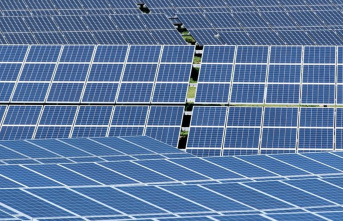Only 1.22% of people who live for rent in Catalonia will end up buying a home in the coming years, according to the study Estimation of the Solvent Demand for Housing in Catalonia and its provinces prepared by the APCE-UPF Housing Chair that it directs Professor Josep Maria Raya. Xavier Vilajoana, president of the promoters' association, APCE, highlighted the need for the public administration and financial institutions to seek formulas to help young people who live for rent to buy.
"Many could pay the mortgage payments, but what leaves them out is the 30% barrier that they need to have in cash for entry and taxes," said the PACE president. Vilajoana pointed to formulas such as co-ownership, in which the administration would buy that 20% of the house, or the one that Murcia has tried, in which the autonomous community guarantees 20% of the entry before financial entities.
The study, presented today at the TecnoCampus in Mataró, highlights that in Catalonia currently only 40.28% of housing demand is for purchase, when before 2008 it was 80%. “Currently, of every 100 homes sold, approximately half are for primary residence; 10% second home purchases, an option that has risen a lot after the pandemic, and the rest are acquired by investors,” said Raya.
The decrease in the weight of property as a formula for access to housing has been constant in the last 15 years, and the study predicts that it will continue so that in 2025 the number of applicants will drop by 7.7% (5,800 people) of owned housing.
The APCE study indicates that between 2021 and 2025 Catalonia will need housing for 185,500 people, 75% of which (140,000 people) in the Barcelona demarcation. However, only 79,900 people will demand it in property.
Raya explained that the estimate is based on a "medium" scenario, without a demographic boom due to immigration or extreme population loss due to emigration, a situation that could reduce the demand for home ownership to 43,000 homes by 2025. At the other extreme , if there were a demographic shock due to the arrival of immigrants, the need for housing could skyrocket to 237,850 people, which would further exacerbate the problems of access to housing, but would not significantly increase the demand for home ownership.
Vilajoana stressed that the construction of housing in Catalonia is now 11,000 homes per year, "well below what society needs", which according to the study is between 8,600 and 16,000 main homes per year.
The patron of the promoters highlighted as the main cause of the shortage of new construction “the lack of the raw material for housing: the land. And this is the responsibility of the administration, which has paralyzed the urbanization process for years. Consolidated urban land is few and will run out in time. If this rate of construction does not increase, the pressure on prices will increase. And we should all work to prevent it.”
Raya pointed out that the price of housing grew by 5% last year, below inflation, which was 9%, which meant a margin reduction for developers. These, he acknowledged, are facing the rise in prices of raw materials, which increases the cost of construction by between 10% and 12%, and around 5.5% the final price of a home.
The increase in the price of raw materials has delayed the start of some promotions, recognized the president of the APCE. "An entrepreneur must have an estimate of how much the work will cost and the time to finish it," he assured, because all of this impacts the final demand for housing.
4












